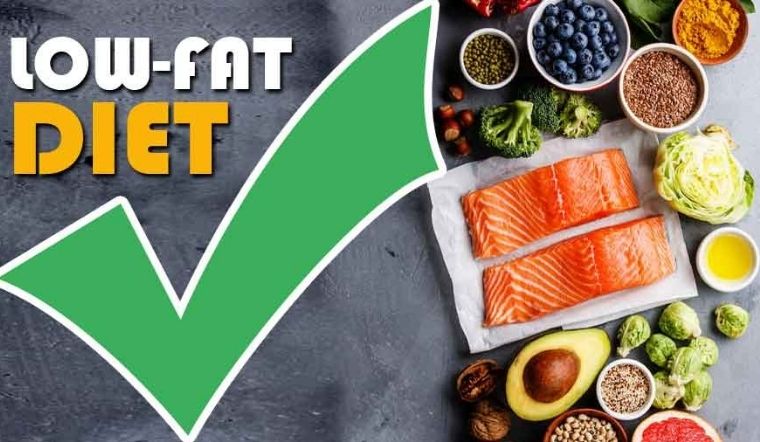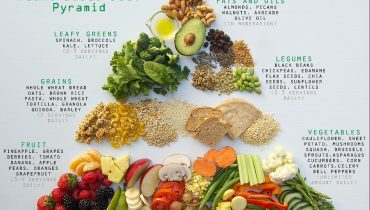In the quest for a healthier lifestyle, many people turn to various diet plans to manage their weight and improve their overall health. Among these, low-fat diets have been popular for decades, especially during the late 20th century. This article will explore the benefits and challenges of low-fat diets, providing valuable information for those considering this approach to healthy eating.
What is a Low-Fat Diet?
A low-fat diet emphasizes reducing the intake of dietary fats, particularly saturated fats and trans fats, which are often linked to increased cholesterol levels and a higher risk of heart disease. The goal is to consume fats in moderation, focusing on healthy fats while reducing overall fat consumption. Typically, a low-fat diet restricts fat intake to about 20-30% of total daily calories.

The Benefits of a Low-Fat Diet
Heart Health: One of the primary benefits of a low-fat diet is its potential to improve heart health. By reducing saturated and trans fats, individuals can lower their LDL (bad) cholesterol levels, reducing the risk of cardiovascular diseases. Studies have shown that diets low in saturated fats can help prevent heart attacks and strokes.
Weight Management: Low-fat diets can be effective for weight loss and weight management. Since fats are calorie-dense (providing 9 calories per gram compared to 4 calories per gram for carbohydrates and proteins), reducing fat intake can help decrease overall calorie consumption. This can lead to gradual weight loss when combined with a balanced diet and regular exercise.
Digestive Health: Lower fat intake can also benefit digestive health. High-fat diets are often associated with gastrointestinal issues like bloating, acid reflux, and irritable bowel syndrome (IBS). Reducing fat can help alleviate these symptoms and promote better digestion.
Cancer Prevention: Some research suggests that low-fat diets may reduce the risk of certain cancers, particularly breast and colon cancer. While more studies are needed to confirm these findings, the potential link between fat intake and cancer risk is worth considering.
Blood Pressure Control: A low-fat diet, particularly one rich in fruits, vegetables, and whole grains, can help lower blood pressure. These foods are naturally low in fat and high in essential nutrients like potassium and fiber, which support healthy blood pressure levels.
The Challenges of a Low-Fat Die
Nutrient Deficiency: One of the main challenges of a low-fat diet is the risk of nutrient deficiencies. Healthy fats are essential for the absorption of fat-soluble vitamins (A, D, E, and K) and for overall cell function. Completely eliminating or severely restricting fat intake can lead to deficiencies in these vital nutrients.
Hunger and Satiety: Fats play a crucial role in satiety, helping people feel full and satisfied after meals. Low-fat diets can sometimes leave individuals feeling hungry and unsatisfied, leading to overeating or frequent snacking on unhealthy foods. It’s essential to include healthy fats in moderation to maintain satiety and prevent cravings.
Balance and Moderation: A common pitfall of low-fat diets is the tendency to replace fats with refined carbohydrates and sugars, which can negate the health benefits. It’s important to focus on a balanced diet that includes whole grains, lean proteins, and plenty of fruits and vegetables, rather than simply cutting out fats.
Sustainability: Maintaining a low-fat diet over the long term can be challenging. Many people find it difficult to adhere to restrictive diets, leading to yo-yo dieting or weight regain. A more flexible approach that allows for healthy fats in moderation may be more sustainable and enjoyable.
Tips for a Successful Low-Fat Diet
Choose Healthy Fats: Incorporate healthy fats into your diet, such as those found in avocados, nuts, seeds, and fatty fish. These fats provide essential nutrients and can help you feel satisfied without consuming too many calories.
Focus on Whole Foods: Prioritize whole, unprocessed foods like fruits, vegetables, whole grains, and lean proteins. These foods are naturally low in unhealthy fats and high in essential nutrients.
Read Labels: When buying packaged foods, read labels carefully to avoid hidden fats, especially trans fats and high levels of saturated fats. Look for products labeled as low-fat or fat-free, but be cautious of added sugars and other unhealthy ingredients.
Cook at Home: Preparing meals at home allows you to control the ingredients and cooking methods, making it easier to reduce fat intake. Use healthy cooking methods like baking, grilling, steaming, or sautéing with minimal oil.
Stay Informed: Educate yourself about the different types of fats and their health impacts. Understanding which fats to avoid and which to include in your diet can help you make healthier choices.
Low-fat diets can offer numerous health benefits, particularly for heart health, weight management, and digestive health. However, they also come with challenges, such as potential nutrient deficiencies and issues with hunger and satiety. The key to a successful low-fat diet is balance and moderation, focusing on healthy fats and whole foods while avoiding unhealthy fats and highly processed foods.
By making informed choices and maintaining a balanced diet, individuals can enjoy the benefits of a low-fat diet while minimizing the challenges. As with any diet, it’s essential to consult with a healthcare professional or a registered dietitian to ensure it meets your specific health needs and goals. With the right approach, a low-fat diet can be a valuable tool for achieving and maintaining optimal health.


















